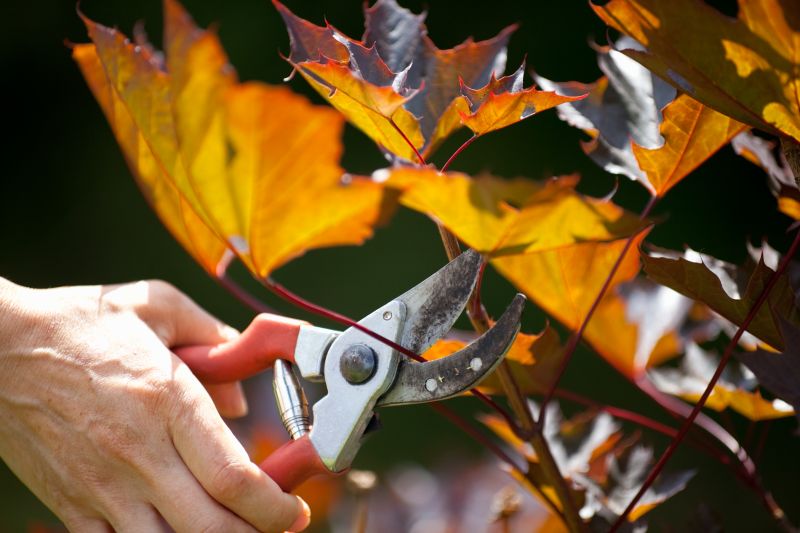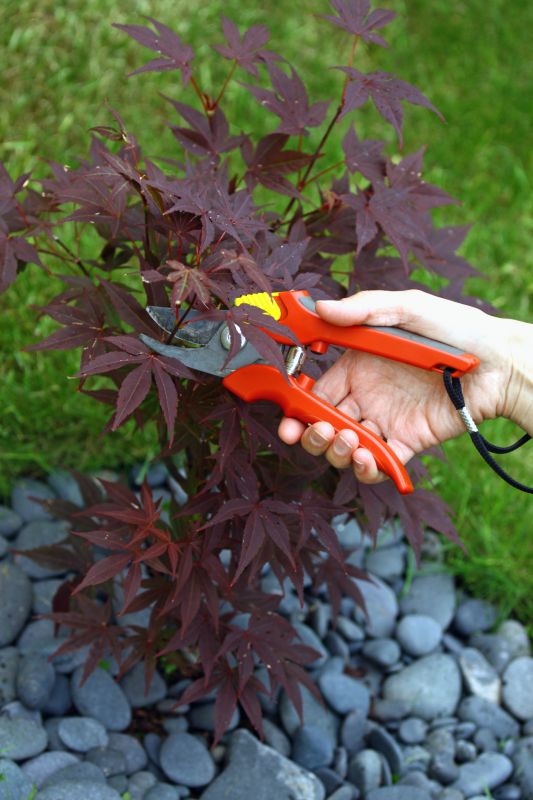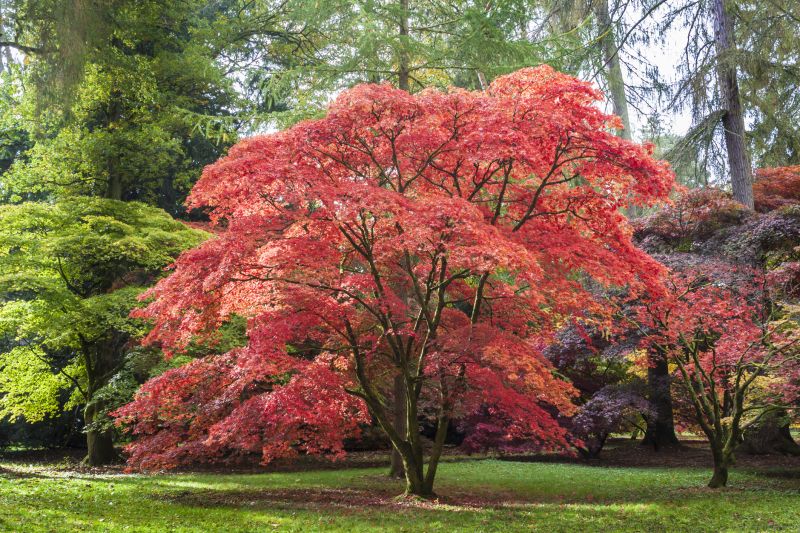Get Japanese Maple Pruning in Glendale, AZ
Japanese Maple Pruning services offered by local contractors in Glendale, AZ help improve tree health, shape the canopy, remove dead branches, and prevent potential hazards.
Proper pruning of Japanese maples is essential for maintaining their health, appearance, and overall longevity. Property owners in Glendale, AZ, who want to enhance their landscape or ensure their trees remain safe and well-shaped often consider professional pruning services. Whether aiming to improve airflow, remove dead or overgrown branches, or encourage vibrant growth, consulting experienced local contractors can provide valuable guidance and skilled care tailored to the unique climate and conditions of the area.
Exploring options for Japanese maple pruning allows property owners to compare different service providers and find the right fit for their needs. By reviewing local contractors’ expertise and approach, residents can plan their landscaping projects with confidence. Keep reading to discover more about how professional pruning can benefit your trees and landscape, and learn how to connect with trusted service providers in Glendale, AZ.
- Japanese Maple Pruning - needed when overgrown branches threaten the health or aesthetics of the tree in neighborhoods across Glendale, AZ.
- Japanese Maple Pruning - recommended if dead or damaged limbs are impacting the tree’s growth in nearby residential areas.
- Japanese Maple Pruning - essential for improving light penetration and air circulation in yards of homes in the Glendale suburbs.
- Japanese Maple Pruning - advised when shaping or maintaining the tree’s size to fit small or crowded spaces in local communities.
- Japanese Maple Pruning - useful for removing crossing branches that may cause damage or interfere with power lines in Glendale neighborhoods.



Japanese Maple pruning services involve carefully trimming and shaping these distinctive trees to promote healthy growth and maintain their aesthetic appeal. Skilled service providers assess the tree’s structure, removing dead or diseased branches and reducing overgrown limbs that can hinder sunlight penetration and air circulation. Proper pruning not only enhances the tree’s natural beauty but also helps prevent potential problems such as limb breakage or disease spread. This tailored approach ensures the Japanese Maple remains vibrant and well-maintained, contributing to the overall landscape’s visual harmony.
Regular pruning can address common issues that arise with Japanese Maples, such as uneven growth, crowded branches, or branches that are at risk of breaking. Overgrown or poorly shaped trees may become susceptible to pests or diseases, which can compromise their health. Additionally, removing damaged or crossing branches reduces the likelihood of limb failure during storms or high winds. Service providers can also help correct any existing problems caused by improper pruning in the past, restoring the tree’s natural form and health.
Japanese Maple pruning services are often sought by homeowners with landscaped gardens, estate properties, or residential yards that feature mature trees. These trees add distinctive color and texture to outdoor spaces, making proper care essential for their longevity and beauty. Property owners who notice their Japanese Maples becoming overgrown, developing deadwood, or losing their shape may consider professional pruning. Such services are also valuable for those preparing their landscape for seasonal changes or special events, ensuring the trees look their best year-round.
Choosing the right local contractor for Japanese Maple pruning can make a significant difference in the health and appearance of the trees. Service providers typically have experience working with ornamental trees, understanding the specific pruning techniques that benefit Japanese Maples. Homeowners in areas like Glendale, AZ, and nearby communities often turn to these professionals to maintain the beauty and structural integrity of their trees. Contacting local experts can help ensure that pruning is performed correctly, supporting healthy growth and enhancing the overall landscape aesthetic.
The overview below groups typical Japanese Maple Pruning projects into broad ranges so you can see how smaller, mid-sized, and larger jobs often compare in Glendale, AZ.
In many markets, a large share of routine jobs stays in the lower and middle ranges, while only a smaller percentage of projects moves into the highest bands when the work is more complex or site conditions are harder than average.
Smaller Pruning Jobs - Typical costs for routine pruning of Japanese Maples range from $250 to $600, covering basic trimming and shaping. Many standard maintenance projects fall within this range, especially for healthy, mature trees. Larger or more detailed jobs may cost more depending on tree size and complexity.
Moderate Tree Trimming - For more extensive pruning, such as removing multiple branches or shaping larger trees, costs generally range from $600 to $1,200. These projects are common for homeowners seeking regular upkeep or aesthetic improvements. Less frequent or simpler jobs tend to stay below this range.
Major Pruning or Reshaping - Larger, more complex pruning projects can reach $1,200 to $2,500, especially for older or overgrown trees requiring significant work. Many such projects are less common but necessary for health and safety reasons, often pushing costs into this higher tier.
Full Tree Removal or Rejuvenation - Complete removal or extensive rejuvenation services for Japanese Maples can cost $2,500 and above, with larger or more intricate projects potentially exceeding $5,000. These are typically specialized jobs that only a subset of local contractors undertake, with most projects falling into the lower to mid-range brackets.
Actual totals will depend on details like access to the work area, the scope of the project, and the materials selected, so use these as general starting points rather than exact figures.
Pruning Fruit Trees - this project involves precise trimming techniques that are similar to Japanese Maple pruning for promoting healthy growth and aesthetic shape.
Ornamental Shrub Trimming - shaping and maintaining decorative shrubs requires skills in pruning and planning comparable to Japanese Maple care.
Landscape Tree Pruning - managing the health and appearance of larger trees involves planning and tools akin to those used in Japanese Maple pruning.
Hedge Trimming and Shaping - creating uniform and attractive hedges demands careful cutting and planning skills similar to pruning delicate trees like Japanese Maples.
Topiary and Formal Garden Pruning - sculpting plants into specific shapes involves detailed pruning techniques that relate to Japanese Maple shaping.
Storm Damage Tree Cleanup - removing broken or damaged branches requires careful pruning skills applicable to delicate trees such as Japanese Maples.

When selecting a service provider for Japanese Maple pruning, it’s important to consider their experience with similar projects. Homeowners should inquire about how long a contractor has been working with Japanese maples or comparable ornamental trees, as well as the types of pruning techniques they typically use. An experienced professional will understand the specific needs of these delicate trees and be better equipped to perform careful, effective pruning that promotes healthy growth and aesthetic appeal.
Clear and detailed written expectations can help ensure both parties are aligned on the scope of work. Homeowners should seek service providers who can articulate their pruning approach, including what will be done, how it will be executed, and any recommendations for ongoing tree care. This clarity helps prevent misunderstandings and provides a basis for evaluating whether the contractor’s method aligns with the homeowner’s goals for the tree’s health and appearance.
Reputable references and effective communication are key indicators of a trustworthy local contractor. Homeowners are encouraged to request references from past clients who had similar pruning work done, as well as to assess how promptly and clearly the contractor responds to questions. Good communication fosters confidence that the service provider understands the project’s specifics and will keep the homeowner informed throughout the process. It’s important to note that this site introduces homeowners to local options and does not perform the work itself, so taking the time to compare these qualities can help identify the best professional for Japanese Maple pruning needs.
Property owners in Glendale, AZ use Japanese Maple Pruning services for practical projects around their homes and businesses. This guide focuses on everyday jobs and straightforward project options.


Japanese maple pruning services are often sought by property owners in Glendale, AZ, who want to maintain the health and appearance of their trees. Regular pruning can help remove dead or damaged branches, improve airflow, and promote new growth, which is especially important during the hot Arizona summers. Local contractors can assist with shaping the trees to enhance curb appeal or ensure they do not interfere with power lines or structures, making the property safer and more attractive.
In addition, property owners may look for Japanese maple pruning when preparing for seasonal changes or addressing overgrowth that could block pathways or views. Proper trimming can also prevent potential damage from heavy winds or storms common in the area. Service providers familiar with the local climate and tree care techniques can help keep Japanese maples healthy and thriving, contributing to the overall beauty and safety of the property.
Why is pruning important for Japanese Maples? Proper pruning helps maintain the tree’s shape, promotes healthy growth, and can improve its overall appearance and longevity.
When is the best time to prune a Japanese Maple? The ideal time to prune is during late winter or early spring before new growth begins, but local contractors can advise based on specific conditions.
What pruning techniques are used for Japanese Maples? Techniques typically include thinning, heading back, and shaping to remove dead or crossing branches and enhance the tree’s natural form.
Can pruning help prevent disease in Japanese Maples? Yes, removing damaged or diseased branches can improve airflow and reduce the risk of infections or pest infestations.
How do local contractors determine the right pruning approach? They assess the tree’s age, health, and growth pattern to develop a tailored pruning plan that supports its development.
Enhance curb appeal - Proper pruning of Japanese maples can improve the overall appearance of a property, making it more inviting to visitors and potential buyers.
Maintain tree health - Regular trimming helps remove dead or diseased branches, promoting stronger growth and reducing the risk of damage during storms.
Ensure safety - Pruning can prevent overgrown branches from obstructing walkways or interfering with power lines, creating a safer outdoor environment.
Support seasonal growth - Properly shaped Japanese maples can encourage healthy growth patterns and vibrant foliage throughout the year.

If you are thinking about Japanese Maple Pruning for a property in Glendale, AZ, this guide is meant to help you understand the work, the typical project types, and how different options might fit your plans.
When you are ready, you can use the quote form on this page to share a few details about your project. From there, local pros can review the basics and respond with options that match what you have in mind.



